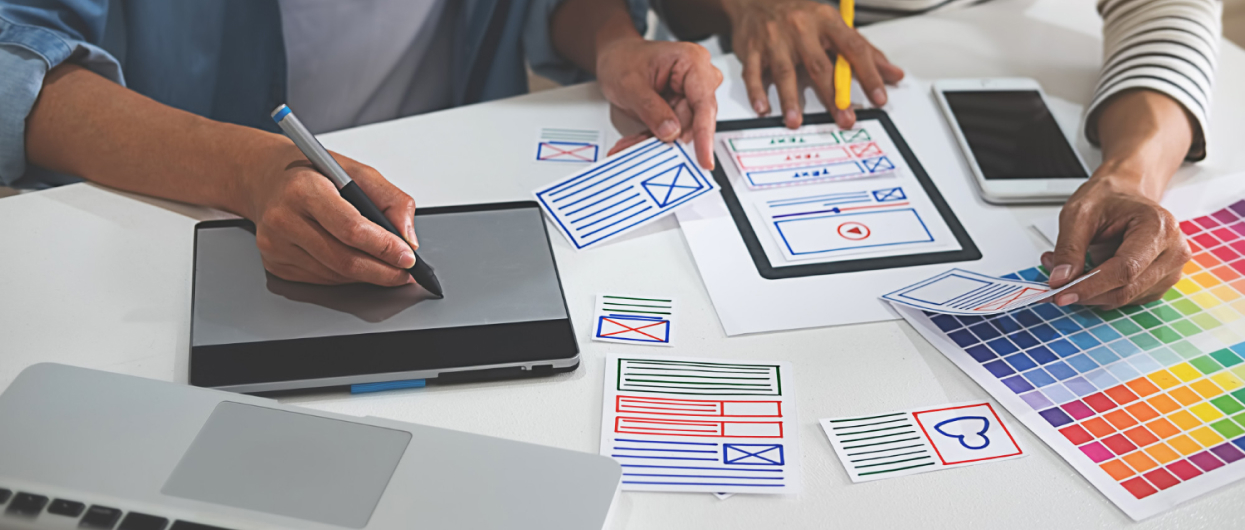In the ever-evolving world of web design, staying ahead of the curve is crucial. As we approach 2023, it’s essential for businesses and designers alike to anticipate the upcoming trends that will shape the digital landscape. From immersive user experiences to innovative technologies, this article explores the web design trends that will dominate in 2023, revolutionizing the way we interact with the online world.
Table of Contents
- Introduction
- Immersive Augmented Reality (AR) Experiences
- Minimalistic and Clean Designs
- Microinteractions: Enhancing User Engagement
- Dark Mode for User Comfort
- Voice User Interface (VUI) Integration
- Chatbots and AI-Powered Customer Support
- Interactive Content: Videos, GIFs, and Animations
- Data Privacy and Ethical Design
- Mobile-First Approach in Web Design
- Inclusive and Accessible Designs
- Typography Trends: Bold Fonts and Creative Text Layouts
- 3D Elements and Graphics
- Eco-Friendly and Sustainable Web Design
- Conclusion
- FAQs
Introduction
As technology continues to advance, web design trends are evolving at a rapid pace. Designers are embracing innovative techniques and tools to create visually appealing and user-friendly websites. Let’s delve into the web design trends that will define 2023.
Immersive Augmented Reality (AR) Experiences
AR technology is set to transform the way users interact with websites. Integrating AR elements into web design can provide users with immersive and engaging experiences, allowing them to visualize products or services in real-time.
Minimalistic and Clean Designs
Simplicity is key in 2023. Clean and minimalistic designs not only enhance the aesthetics of a website but also improve user navigation. By decluttering web pages, designers can focus on essential elements, ensuring a seamless user experience.
Microinteractions: Enhancing User Engagement
Microinteractions involve subtle animations or feedback loops that respond to user actions. These small yet meaningful interactions create a sense of connection between the user and the website, enhancing engagement and user satisfaction.
Dark Mode for User Comfort
Dark mode reduces eye strain and conserves device battery life. In 2023, websites are expected to offer a dark mode option, providing users with a comfortable browsing experience, especially in low-light conditions.
Voice User Interface (VUI) Integration
Voice-controlled interfaces are becoming increasingly popular. Integrating VUI into web design allows users to interact with websites using voice commands, making navigation hands-free and convenient.
Chatbots and AI-Powered Customer Support
Chatbots equipped with artificial intelligence are revolutionizing customer support. They provide instant responses to user queries, enhancing customer satisfaction and improving overall user experience.
Interactive Content: Videos, GIFs, and Animations
Interactive content, such as videos, GIFs, and animations, captures user attention effectively. By integrating these elements into web design, businesses can convey information in a visually appealing manner, ensuring higher user engagement.
Data Privacy and Ethical Design
With growing concerns about data privacy, ethical design practices are crucial. Designers are focusing on creating transparent interfaces, allowing users to understand how their data is being used and ensuring their privacy is respected.
Mobile-First Approach in Web Design
The majority of internet users access websites via mobile devices. Adopting a mobile-first approach ensures that websites are optimized for smaller screens, providing seamless experiences across various devices.
Inclusive and Accessible Designs
Inclusivity is at the forefront of web design trends. Designers are incorporating features that make websites accessible to users with disabilities, ensuring that everyone can navigate and interact with online content effortlessly.
Typography Trends: Bold Fonts and Creative Text Layouts
Typography is becoming more expressive, with designers experimenting with bold fonts and creative text layouts. Unique typography styles not only add personality to websites but also create memorable brand identities.
3D Elements and Graphics
3D elements and graphics add depth and realism to web design. These immersive visuals create interactive environments, enhancing user engagement and providing a memorable browsing experience.
Eco-Friendly and Sustainable Web Design
Sustainability is a growing concern in the digital world. Eco-friendly web design practices, such as optimizing website performance to reduce energy consumption, are gaining traction, aligning businesses with environmentally conscious values.
Conclusion
The web design landscape in 2023 is marked by innovation, creativity, and user-centric approaches. By embracing these trends, businesses can create engaging user experiences, ensuring their online presence resonates with visitors. As technology continues to evolve, staying adaptable and incorporating these trends will be key to successful web design strategies.
FAQs
Q1: What are microinteractions, and how do they enhance user engagement?
Microinteractions are subtle animations or feedback loops that respond to user actions, creating a sense of connection between the user and the website. They enhance user engagement by providing meaningful and interactive responses to user interactions, making the browsing experience more enjoyable and intuitive.
Q2: How can businesses ensure their websites are accessible to users with disabilities?
To ensure accessibility, businesses can follow guidelines such as the Web Content Accessibility Guidelines (WCAG). This includes providing alternative text for images, ensuring keyboard navigation, and using contrasting colors for text and background, making the website usable for all visitors, regardless of their abilities.
Q3: What is the significance of a mobile-first approach in web design?
A mobile-first approach prioritizes designing websites for mobile devices before considering larger screens. With the majority of users accessing the internet via smartphones, this approach ensures that the website is optimized for smaller screens, providing a seamless and user-friendly experience for mobile users.
Q4: How can dark mode benefit users and improve their browsing experience?
Dark mode reduces eye strain, especially in low-light conditions, and conserves device battery life, making it a popular choice among users. By offering a dark mode option, websites enhance user comfort, providing a visually appealing and comfortable browsing experience.
Q5: What role do 3D elements play in web design, and how do they enhance user engagement?
3D elements add depth and realism to web design, creating interactive and visually appealing environments. They enhance user engagement by providing immersive experiences, allowing users to interact with the content in a unique way, leading to a memorable and captivating browsing experience.
The Impact of Deepfake Pornography on Victims



